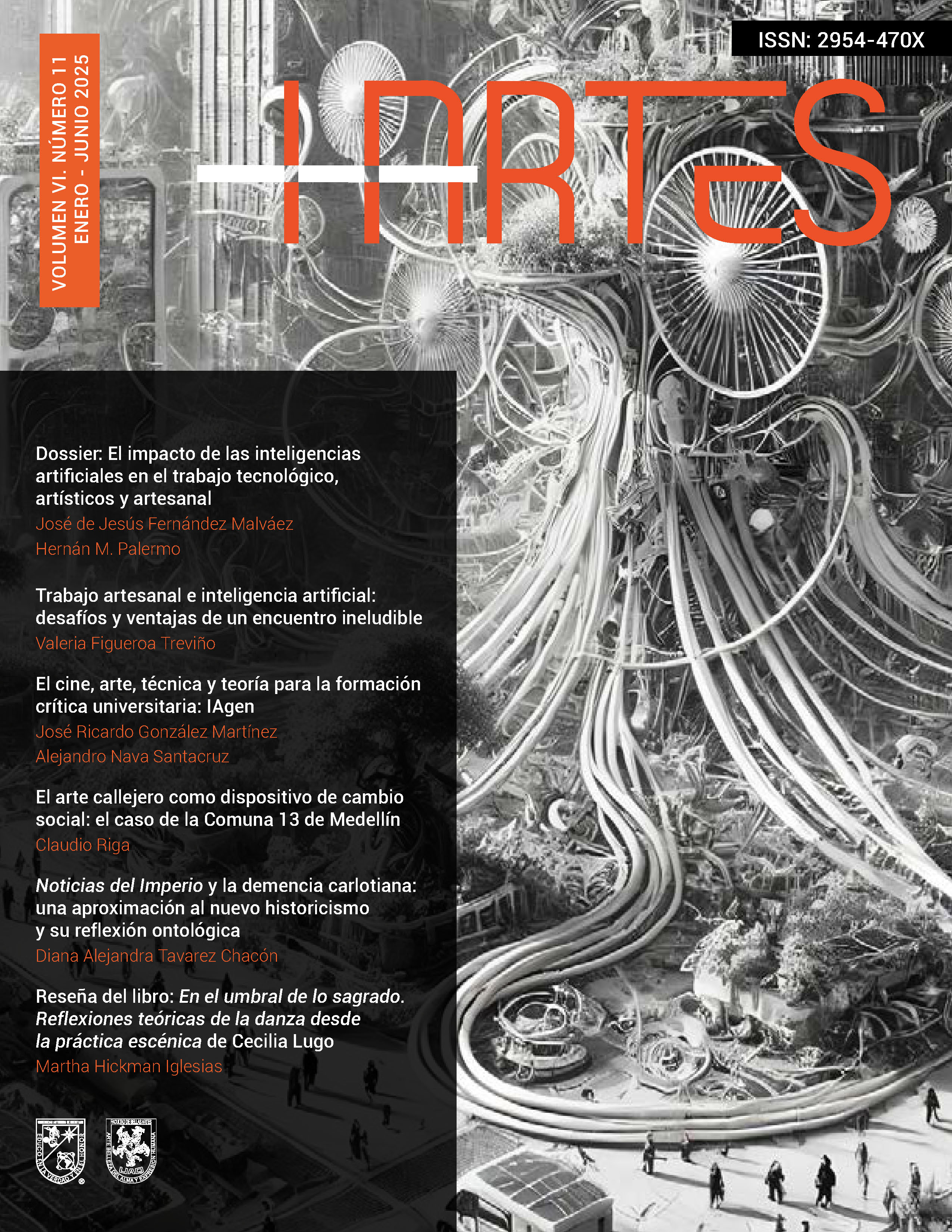Resumen
En una época donde el arte contemporáneo se ve cada vez más intervenido por las tecnologías digitales, el propósito del presente ensayo es hacer una crítica al monopolio del capital que impone su lógica mercantilista sobre los procesos creativos de los nuevos trabajadores que intentan resistir desde las producciones artesanales. A través de un análisis crítico, y por medio de una metodología abductiva, el presente ensayo intenta explicar cómo el aura de la obra de arte nunca dejó de estar presente incluso en los espacios culturales más periféricos. Si bien es cierto que el aura, como categoría estética, ha caído en desuso desde que Walter Benjamin la puso en entredicho, es importante señalar que su empleo nos permite entender que las piezas artesanales son productos que se resisten a ser parte de la narrativa hegemónica del arte contemporáneo. En este contexto donde la obra de arte se convirtió en un artículo de lujo, la labor del artesano toma fuerza como ejemplo de rebeldía frente a un sistema que tiende a precarizar al sujeto creativo.
Referencias
Benjamin, W. (2003). La obra de arte en la época de la reproductibilidad técnica. Editorial Itaca.
Fontcuberta, J. (2010). La cámara de Pandora. La fotografía después de la fotografía. Editorial Gustavo Gili.
Harari, Y. N. (2014). De animales a dioses. Penguin Random House. Martín Prada, J. (2012). Otro tiempo para el arte. Cuestiones y comentarios sobre el arte actual. Sendemá Editorial.
Michaud, Y. (2007). El arte en estado gaseoso. Fondo de Cultura Económica. Steyerl, H. (2014). Los condenados de la pantalla. Caja Negra Editora.
Velázquez Delgado, G. (2015). El rol de la abducción peirceana en el proceso de la investigación científica. Valenciana, 8(15), 190-213. 2007-2538-va-lencia-8-15-00189.pdf (scielo.org.mx)

Esta obra está bajo una licencia internacional Creative Commons Atribución-NoComercial-CompartirIgual 4.0.
Derechos de autor 2025 HArtes


